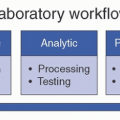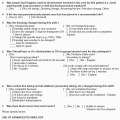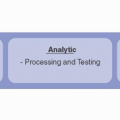Exposures to Contagious Infectious Diseases
Elizabeth A. Soda
David T. Kuhar
With over 16 million healthcare personnel (HCP) in the United States, healthcare-related job growth outpaced nearly all other major sectors of the economy in 2018.1 As this workforce continues to grow, protecting HCP against a variety of hazards including contagious infectious agents remains a critical priority for healthcare organizations. However, despite long-standing regulations and guidelines, a substantial number of potentially infectious exposures among HCP occur in healthcare settings.2,3,4 HCP can be exposed to potentially infectious blood, tissues, secretions, other body fluids, contaminated medical supplies, devices, and equipment, environmental surfaces, water, or air in healthcare settings. The mechanisms of occupational exposures can be diverse and include percutaneous injuries such as sharps injury, ingestions, mucous membrane or nonintact skin contact via splashes or sprays, and inhalation of aerosols. HCP can also be exposed to infectious agents in the community and risk transmitting them to others at work. In this chapter, we will review the general principles of occupational exposures in healthcare settings and how to evaluate and manage them.
DEFINITIONS
HCP refers to all paid and unpaid persons working in healthcare settings who have the potential for exposure to infectious materials, including body substances, contaminated medical supplies and equipment, contaminated environmental surfaces, contaminated air, and contaminated water. They include but are not limited to emergency medical service personnel, nurses, nursing assistants, physicians, technicians, therapists, phlebotomists, pharmacists, students and trainees, contractual staff not employed by the healthcare facility, and persons not directly involved in patient care but who could be exposed to infectious agents that can be transmitted in a healthcare setting (eg, clerical, dietary, environmental services, laundry, security, engineering and facilities management, administrative, billing, and volunteer personnel).5
Healthcare settings include places where healthcare is delivered such as acute care facilities, long-term acute care facilities, inpatient rehabilitation facilities, nursing homes and assisted living facilities, home healthcare, vehicles where healthcare is delivered (eg, mobile clinics), and outpatient facilities, such as dialysis centers, physician offices, and others.5
Infectious agents are organisms that are capable of producing infestation, infection, or infectious diseases. They include organisms such as bacteria, viruses, and parasites.6
Occupational health services (OHS) is used synonymously with “employee health,” “employee health services,” “employee health and safety,” “occupational health,” and other such programs. OHS refers to the group, department, or program that addresses many aspects of health and safety in the workplace for HCP, including the provision of clinical services for work-related injuries, exposures, and illnesses.5
GENERAL PRINCIPLES OF OCCUPATIONAL EXPOSURES IN HEALTHCARE SETTINGS
Several infectious agents, such as bacteria, viruses, and parasites, can be transmitted among HCP and patients. The modes of transmission vary by each agent, and some infectious agents may be transmitted by more than one route. The three principal routes of transmission include contact (direct or indirect), droplet, and airborne.
Direct contact transmission refers to the transfer of an infectious agent from one person to another without a contaminated intermediate object or person.7 Examples include blood or other bodily fluids from a patient entering a provider’s body through contact with a mucous membrane or break in the skin or HCP developing herpetic whitlow on a finger after touching a patient’s herpes simplex virus lesion. Indirect contact transmission is the passing of an infectious agent to an individual through a contaminated intermediate object (eg, medical device, room surface) or individual.7 An example includes Staphylococcus aureus being transferred from a contaminated device or from one patient to another via the hands of HCP.
Droplet transmission occurs when large droplets containing infectious agents come into direct contact with a susceptible individual’s mucous membranes, generally over short distances.7 Examples of infectious agents that spread via droplet transmission include most respiratory viruses, such as influenza, and Neisseria meningitidis. Droplets are generated when an infected individual coughs, sneezes, or talks. However, some medical procedures
such as endotracheal intubation and bronchoscopy may generate higher concentrations of potentially infectious aerosols of some infectious agents compared to coughing or sneezing. During these potentially aerosol-generating procedures, airborne transmission precautions maybe recommended as well as eye protection.8
such as endotracheal intubation and bronchoscopy may generate higher concentrations of potentially infectious aerosols of some infectious agents compared to coughing or sneezing. During these potentially aerosol-generating procedures, airborne transmission precautions maybe recommended as well as eye protection.8
Airborne transmission occurs when small particles in the respirable size range or droplet nuclei containing infectious agents, which can remain suspended in the air for extended periods, are inhaled by an individual.7 Due to the ability of these particles to move with air currents, face-to-face contact with an infected individual is not needed. Examples of infectious agents that spread via airborne transmission include Mycobacterium tuberculosis (TB), the varicella-zoster virus, and the measles virus.
Standard and transmission-based precautions are used in healthcare settings to prevent the transmission of infectious agents among HCP and patients during the delivery of healthcare. Standard precautions are the minimum infection prevention practices that apply to all patient care, regardless of suspected or confirmed infection or colonized status of the patient.7 They include common sense practices such as hand hygiene and the use of personal protective equipment (PPE) whenever there is a possibility of exposure to infectious material. For transmission-based precautions, PPE is recommended for HCP during patient care activities as well as the limitation of non-medically necessary patient movement. Contact Precautions include the use of gowns and gloves, patient placement in a private room or cohorted if not available, and dedicating patient care equipment. Droplet Precautions include HCP wearing a mask upon entry into a patient room or space and patient placement in a private room or cohorted if not available. Airborne Precautions include HCP wearing a fit-tested NIOSH-approved N95 or higher-level respirator and patient placement in an airborne infection isolation room.7 For more detail on these precautions, see also Chapter 3 Isolation of Patients with Communicable Diseases.
Despite recommended precautions to prevent exposures, HCP can be exposed to infectious agents and acquire infectious diseases for a variety of reasons. For instance, a delay in suspecting a patient may have a contagious infectious agent can prevent the implementation of appropriate transmission-based precautions and expose HCP and others. One of the greatest risks for TB transmission in healthcare settings comes from patients with unrecognized TB disease, who have not yet been placed in Airborne Precautions.9 The failure of early detection and implementation of infection control measures was the primary reason for healthcare-associated transmission of Middle East respiratory syndrome-related coronavirus (MERS-CoV) to HCP in the United Arab Emirates.10 Nosocomial transmission of influenza to HCP is well reported, especially in long-term care settings, and the rapid suspicion for and diagnosis of influenza is an important part of limiting this transmission.11,12,13
Another possible reason for HCP acquisition of infectious agents in healthcare settings is lapses in the selection, provision, and use of recommended PPE.14,15,16,17,18 The reasons for these lapses are complex ranging from failures of the healthcare organization including not providing appropriate PPE or needed PPE training to HCP; the equipment itself which may malfunction during use; the user, including HCP disregard for or unintentional mistakes in PPE use; and failures of the patient care environment in facilitating correct PPE use.16
Additional infection control measures such as high HCP adherence to effective hand hygiene can prove difficult in healthcare settings. Some estimates suggest that hand hygiene compliance in the acute care setting can often be <50%, placing HCP at risk of self-contamination and possible illness from a variety of infectious agents.19,20 Deviations from recommended environmental controls can also lead to HCP acquisition of infectious agents. For instance, although most HCP are likely at lower risk for developing Legionnaires’ disease, HCP have been identified as cases in outbreaks.21
Sharps injuries are another important way HCP can be exposed to infectious agents, largely human immunodeficiency virus (HIV), hepatitis B virus (HBV), and hepatitis C virus (HCV). Although the exact number of needlesticks among HCP that occur in the United States is unknown, the U.S. Centers for Disease Control and Prevention (CDC) estimates that 600-800 000 injuries occur annually; however, approximately half of these injuries will go unreported.22,23,24,25,26 Furthermore, 2016 and 2017 sharps injury surveys have reported a significant rise in sharps injury incidence among U.S. HCP.27 After a sharps injury with exposure to an infected source patient, the provider’s risk of developing disease depends upon factors such as the inoculum of virus received (eg, depth of the injury, injure from a hollow-bore vs a solid needle), provider immunity, and the use of postexposure prophylaxis (PEP). Sharps injuries can happen at every stage of their use and particularly during high-risk and not recommended work practices such as recapping a needle and failing to properly dispose of sharps. For more details on exposures to bloodborne pathogens see Chapter 38 Exposures to Bloodborne Pathogens.
The risk for developing disease after occupational exposure can be decreased for some infectious agents by ensuring HCP have recommended evidence of immunity or received appropriate immunizations prior to job placement (see also Chapter 37 Vaccination of healthcare Personnel) and are promptly offered PEP when recommended. Lack of adherence to these pre- and postexposure interventions can place HCP at increased risk for infection after exposure.17,28
An organization’s safety culture can also influence HCP risk of exposure to infectious agents and subsequent infection. Safety culture of an organization refers to the product of individual and group values, attitudes, perceptions, competencies, and patterns of behavior that determine the commitment to an organization’s health and safety management.5 An organization that commits to supporting a culture of safety adopts several characteristics such as acknowledging the high-risk nature of healthcare delivery, creating an environment that allows individuals to report mistakes or near misses, encouraging collaboration among all staff to seek solutions to safety-related problems, and committing the resources needed to correct the safety-related problem.29 A positive safety culture can even shape HCP safe work behavior to include adherence to infection control practices.30 Organizations with poor safety culture
may increase HCP exposures. For instance, needlesticks and other injuries are higher among nurses if challenges within the organizational climate exist such as poor safety climate, understaffing, inadequate administrative support, and poor morale.24,31
may increase HCP exposures. For instance, needlesticks and other injuries are higher among nurses if challenges within the organizational climate exist such as poor safety climate, understaffing, inadequate administrative support, and poor morale.24,31
Stay updated, free articles. Join our Telegram channel

Full access? Get Clinical Tree






